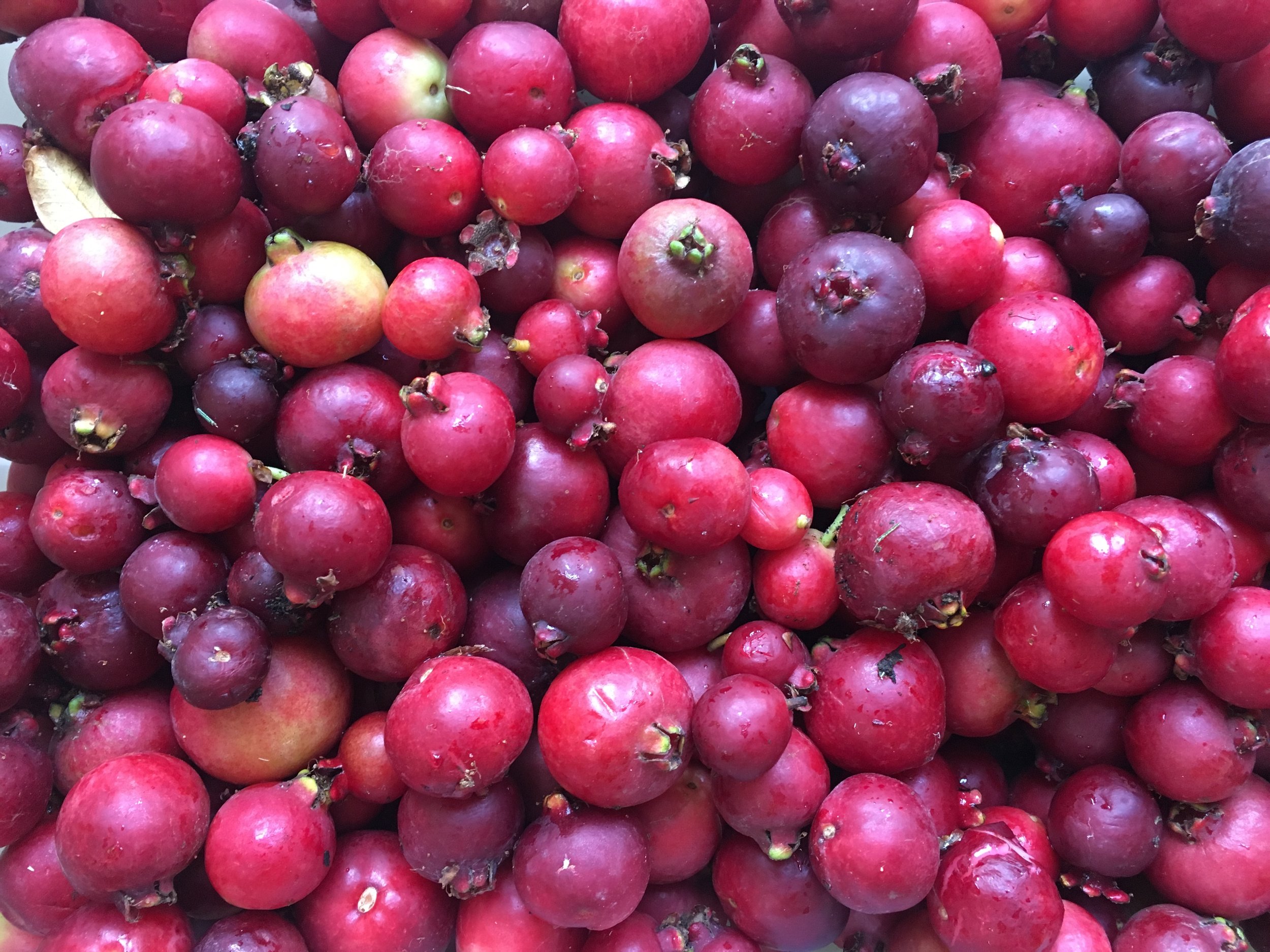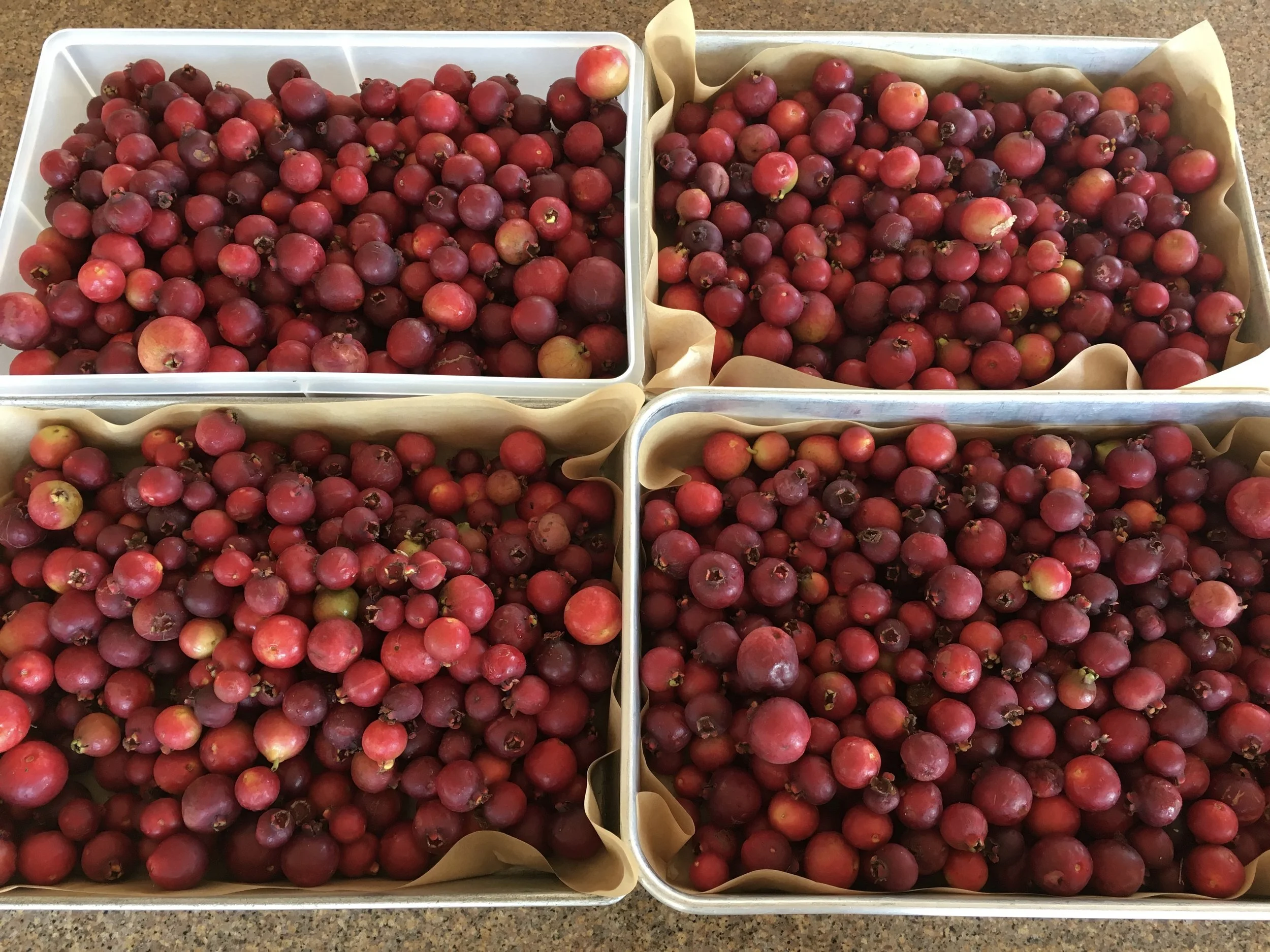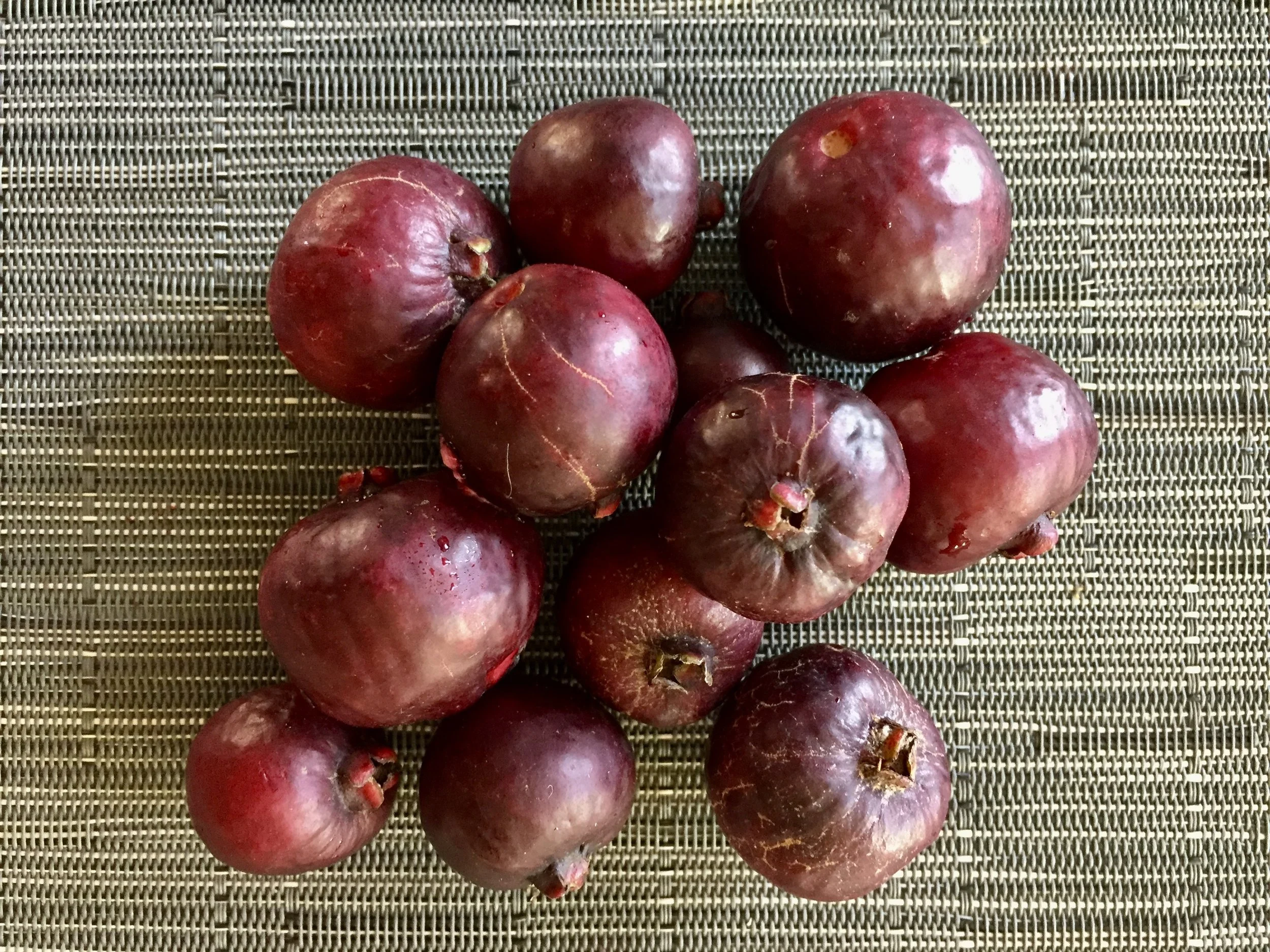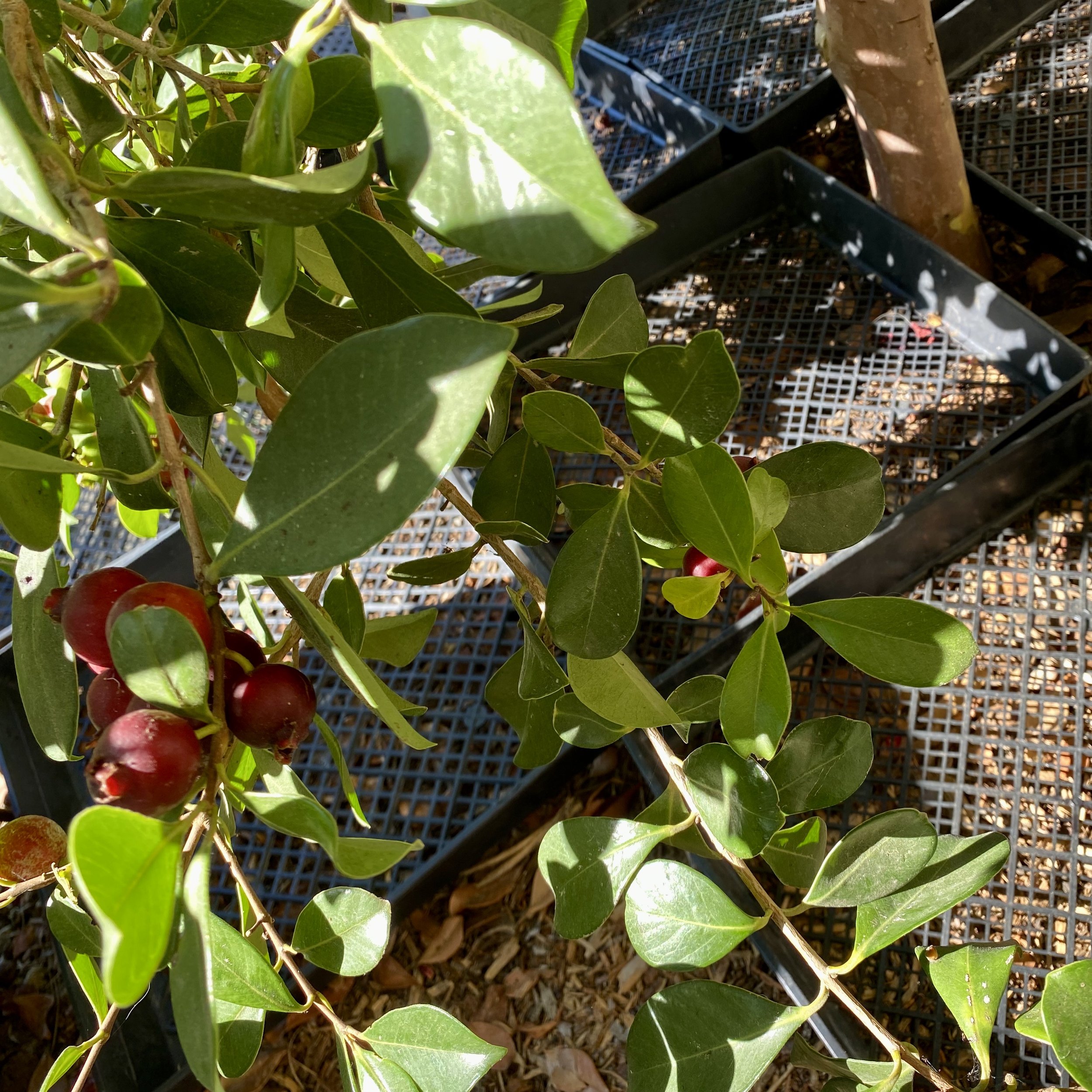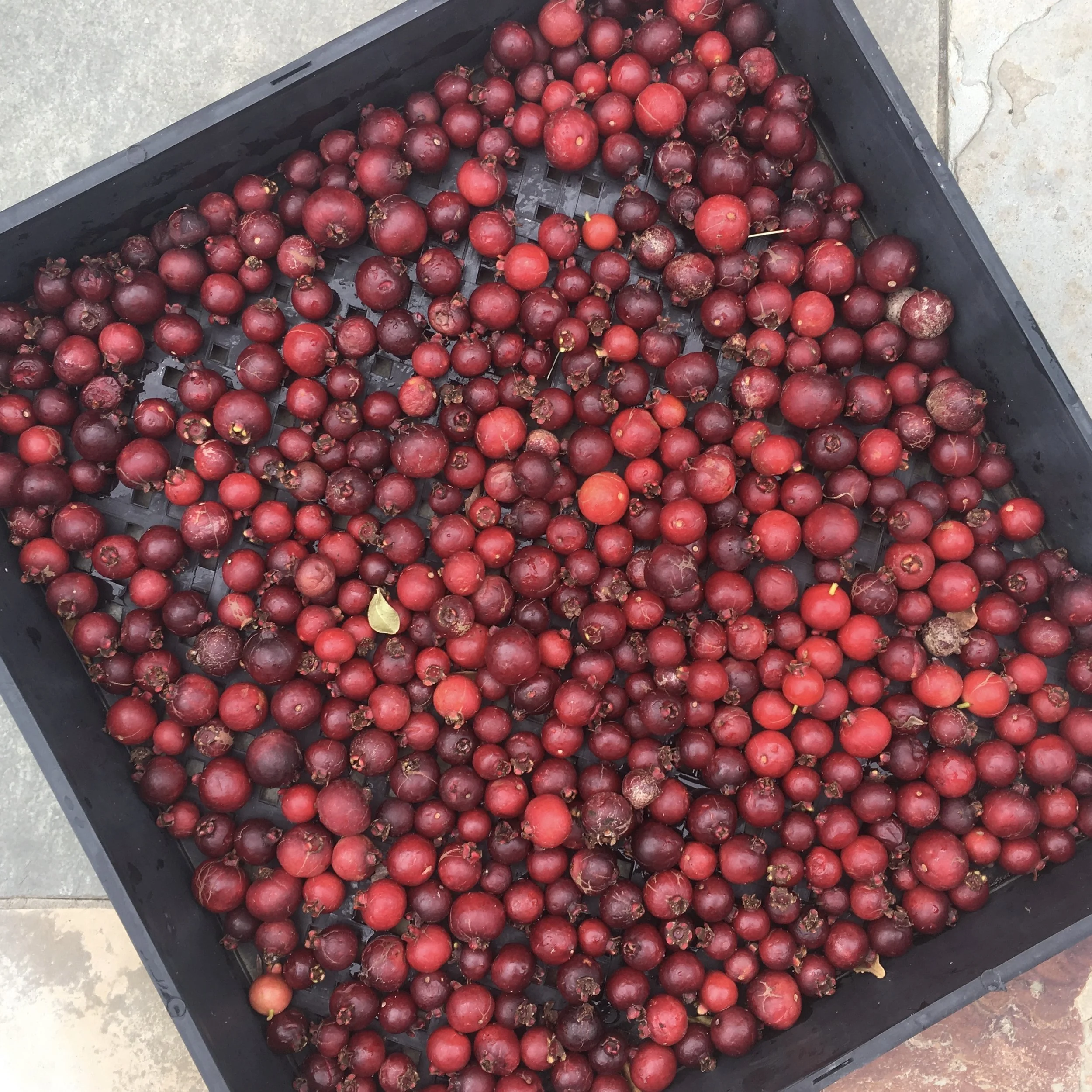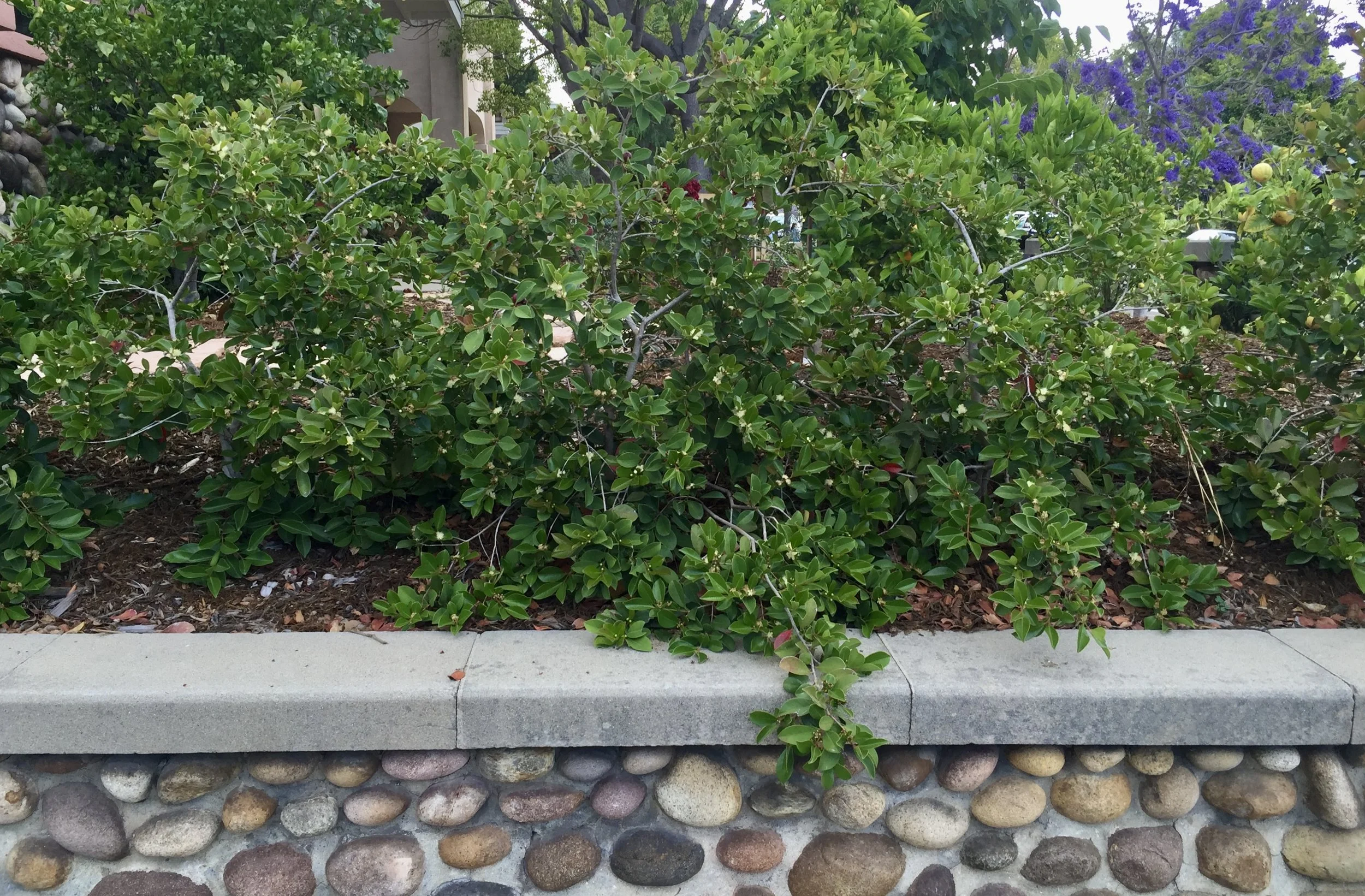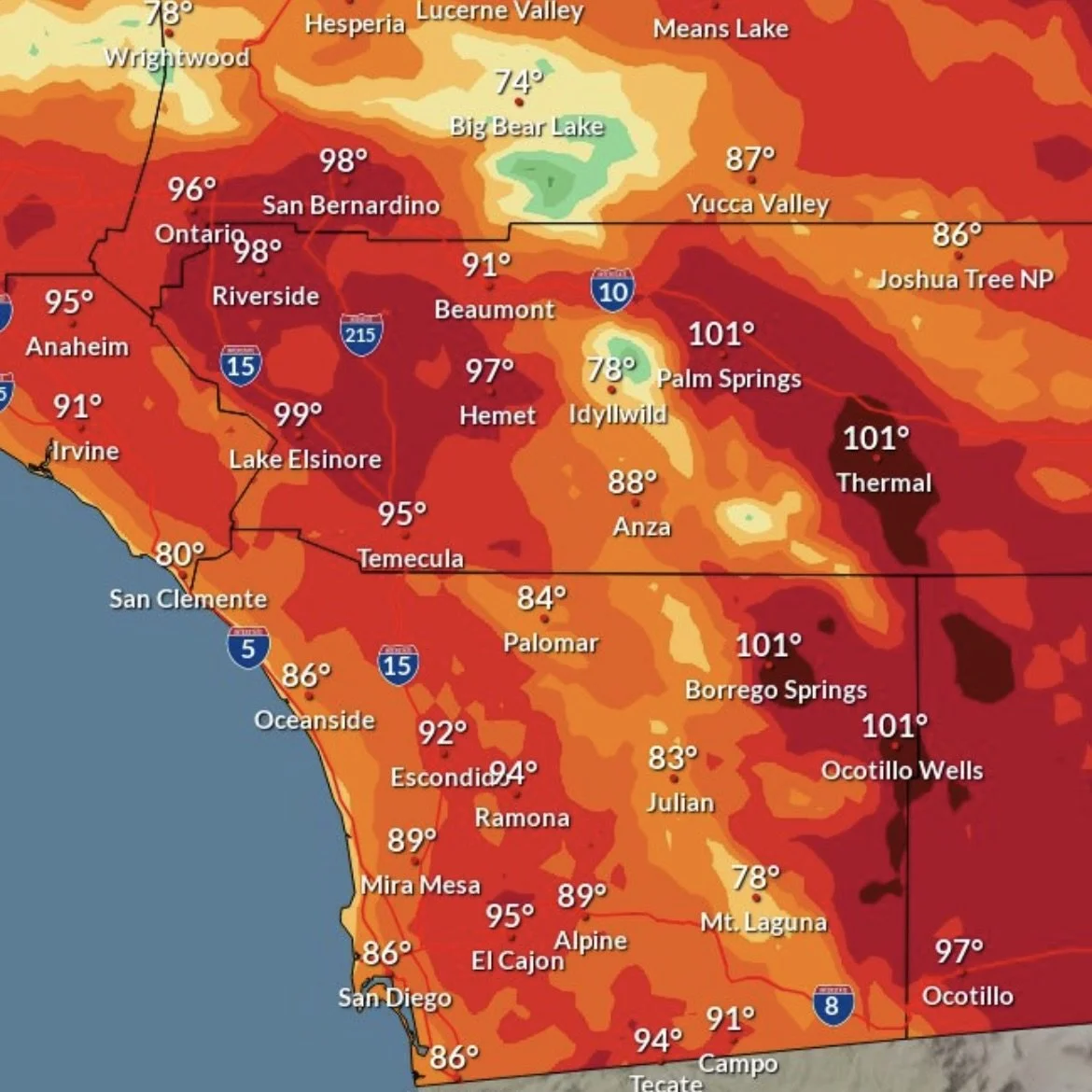Strawberry Guava Redux, Part 1
You may also be interested in the follow-up blog post Strawberry Guava Redux, Part 2.
We are 20 pounds into strawberry guava season with no more than 10-15% of the crop harvested. I’m tempted to attribute the fruit size and the health of the crop to our unexpected two inch tropical storm in August. We usually see the guava inundation in early to mid-September but like other fruit trees in 2023, harvests have been 2-4 weeks later than most years.
Thankfully, each year we encounter one or two new takers for the guavas. We may be up to a dozen now but all are very enthusiastic.
Our guavas store well in low flat covered containers in the fridge awaiting processing. Next week I’ll show our process for making the guava puree.
Strawberry guavas evoke memories of my grandmother and her backyard in Laguna Beach. My sister and I remember a small guava tree, no more than four feet high, but very productive. Grandma made guava jelly to share with family and friends. It was a lovely pink color that shimmered in the light.
Many years ago someone gave me a seedling guava, a stick only about a foot tall. It grew to about two feet in a large pot on my patio. One season it yielded six pounds of guavas. Then my family forgot to water it when I was away for a few weeks in the summer. It was never the same.
In a providential encounter, I met Mrs. Blake. She lived about a mile from me and had three strawberry guava trees. Her grandfather had a guava ranch and his was the first house built in Mission Hills (San Diego) in 1888, I was told. Mrs. Blake was in her 80’s and lamented the guavas dropping to the ground and rolling to the gutter. We agreed, nothing should be wasted. And so she invited me to gather and pick all I could use. She gave me her family’s guava jam recipe and some of her jam jars. I returned the favor with guava jam and my husband pruned her guava trees each winter for several years.
When Mrs. Blake’s health declined, I decided to plant a strawberry guava tree. It would be a new source of guavas and a nod to the memory of my grandmother and Mrs. Blake. I searched nurseries in San Diego’s North County and found the species guava I remembered at Clausen Nursery in Vista, CA. The new leaves emerge bronze-green. I planted it in a sunny, sheltered location near my kitchen window.
Strawberry guava trees grow quickly and produce fruit early. Usually there’s an ebb and flow of this very flavorful, tangy, sweet fruit through much of the year with the most fruit in September here at the coast.
Read more about strawberry guavas (Psidium cattlianum) here. In Hawaii and Florida they are considered an ecological threat. Strawberry guavas grow easily from seed which is available from Trade Winds Fruit.
My strawberry guava is a handsome specimen tree kept to ten feet. We gather guavas daily on garden trays lined up under the tree which makes it easy to collect them since they are small. Usually my husband gives the tree a good shake and a shower of guavas ensues. Then comes the sort, though this year the quality is high and we’ve kept up with drops.
We also pick the largest ripe guavas for eating and sharing with friends. Most of the smaller ones are processed for puree. I freeze the puree and later use some for strawberry guava jam, about three dozen jars or more to give away.
Over the years I’ve found other uses for strawberry guavas—in part out of desperation. Most often I stir the puree into plain Greek yogurt or my homemade applesauce. It also brightens the color and flavor of my cooked rhubarb. Frozen cubes of puree go into smoothies. Other favorite uses include strawberry guava sherbet, guava-lime agua fresca, guava paste and guava BBQ sauce.
Many find the guava too astringent or the hard, small seeds bothersome. Not me. When working in the garden, I like to select a large guava, warm from the sun and delightfully ripe. I rub the skin in my hands and eat it. I swallow the tiny hard seeds. They are all part of the pleasure of eating a strawberry guava.
Guava hedge in flower in Mission Hills, San Diego.

